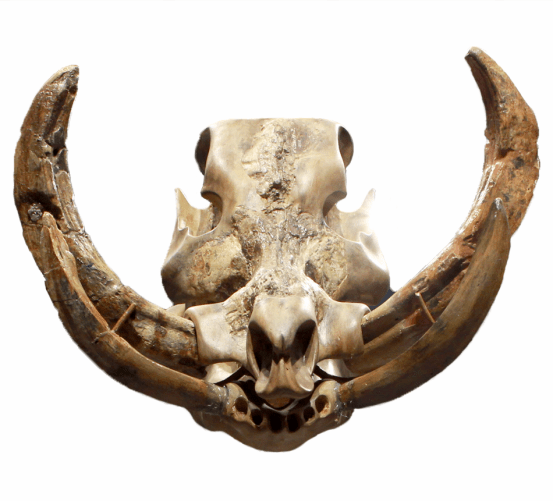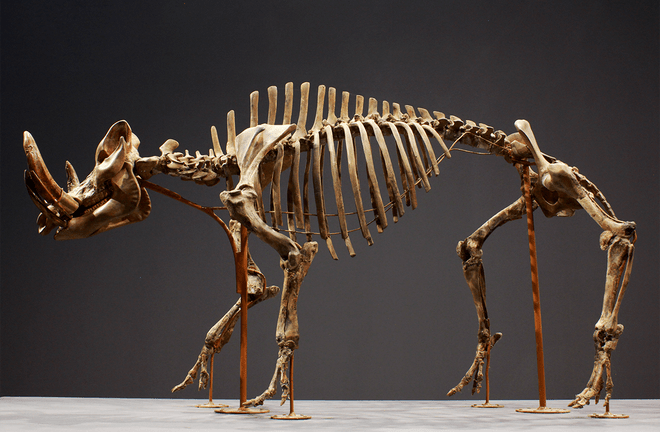Our planet is remarkable. Think about it for a second. Oceans full of fish, mammals, invertebrates. Land covered by plants, incredible insects, and amazing animals. The skies full of birds, mammals, and insects. All this life around us living, surviving, dying. Millions of different species of all shapes, sizes, and colours sharing this planet with us. Each species unique. Each playing its own role in the complex ecosystems. It is easy for us to take this for granted with the pressures of our daily lives. Stop. Listen to the bird song. Watch the gentle sway of the leaves in the wind. Spend a few minutes looking at that insect: that little creature oblivious to our lives and seemingly frantically carrying on with theirs. We live in a beautiful world.
It has always been a beautiful world. Our blog posts about the animals of the Pleistocene try to share how amazing animals in the not too distant past were. No matter how bizarre. And there were some truly wonderfully weird creatures. Weird to our eyes. For them, they were perfect. Not matter how weird they seem to us, they were well adapted to their environments. They lived. The odd looking chalicotheres, which looked like a mix between a horse and a gorilla. The spectacular deer, Eucladoceros, with remarkable antlers reminiscent of some kind of forest god. And so, so many more. Including this beast, Celebochoerus, the shovel pig.
Celebochoerus was a genus of pigs that lived in Indonesia. They were around the same size as wild boar today, but the shovel pig had one big difference: the tusks were enormous! Wild boar can be quite ferocious. Dogs that are with the hunting party are often injured, and in the early 15th century people were injured too. Let’s not forget king Robert Baratheon of Westeros was severely mauled on a boar hunt, which was the end for him, and the beginning of the brutal fight for the throne: really, I blame that boar for the whole seven, bloody, seasons. The enormous tusks on Celebochoerus would undoubtably have provided protection against predators. They would have also been useful in moving vegetation and debris when searching for food; giving the name, shovel pig.

There were two species of this wonderful beast; C. heekereni living on the large Island of Sulawesi in Indonesia, and C. cagayanensis which was discovered fairly recently in 2016, on the larger island of Luzon in the Philippines. Looking at the fossils hints that the shovel pigs ancestors originated in Taiwan, moving into Indonesia, and then into the Philippines. We know it lived from the Late Pliocene around 3 million years ago until the Middle Pleistocene, around 1 million years ago. For a change, it looks like humans were not the reason for this wonderful creature’s extinction. It appears that other species of pigs moving into their environment pushed them to the edge. There are not a huge amount of fossils and mostly from a few sites, so there is still a lot more we can learn about them. I am pretty excited about future fossil discoveries of this beast to give us lots more information.

Other amazing animals lived alongside the shovel pig in Indonesia, including giant land tortoises, dwarf elephants, and crocodiles along with smaller reptiles and mammals. And the shovel pigs were a part of this amazing ecosystem. Surrounded by rainforest and rivers, it was a beautiful unspoilt time. A time that seems so far away. So difficult to imagine animals like our shovel pig trotting amongst the tress. But it was relatively recent. Just a million years. That is nothing on the whole grandiose scale of geological time.
Our planet has always been glorious. Perhaps, some may argue that it was even more beautiful before humans spread across the globe building giant cities, and destroying forests. It probably was. But this is the world we have. We only have one. A single planet. Earth. So many amazing animals have disappeared throughout time. Strange ones, like the shovel pig. Vanished forever. But we are lucky. We have a whole planet full of amazing plants and animals all around us. Take a moment to look. And really see the beauty.
Written by Jan Freedman (@JanFreedman)
Thank you to the Museum Geologi for allowing us to reproduce their images for this blog.
Further reading:
Groves, C. 2001. Mammals in Sulawesi: Where did they come from and when, and what happened to them when they for there? In Metcalfe, I, et al. Faunal and Floral Migration and evolution in SE Asia-Australasia. CRC Press. Pp. 333-342. [Full article]
Hooijer, D. A. 1954. Pleistocene vertebrates from the Celebes. VIII. Dentition and skeleton of Celebochoerus heekereni Hooijer. Zoologische Verhandelingen. [Full article]
Hooijer, D. A. 1972. Pleistocene vertebrates from the Celebes. XIV. Additions to the Achidiskodon-Celebochoerus fauna. Zoologische Verhandelingen. [Full article]
Ingicco, T., van den Bergh, G., de Vos, J., Castro, A., Amano, N. & Bautista, A. (2016). A new species of Celebochoerus (Suidae, Mammalia) from the Philippines and the paleobiogeography of the genus Celebochoerus Hooijer, 1948. Geobios, 49 (4), 285-291. [Abstract only]
Laurent, A. F., et al. 2018. Synchronous diversification of Sulawesi’s iconic artiodatyls driven by recent geological events. Proceedings of the Royal Society. B. Biological Sciences. 285 (1876). [Full article]


Wow!
That skeleton looks like a tank.